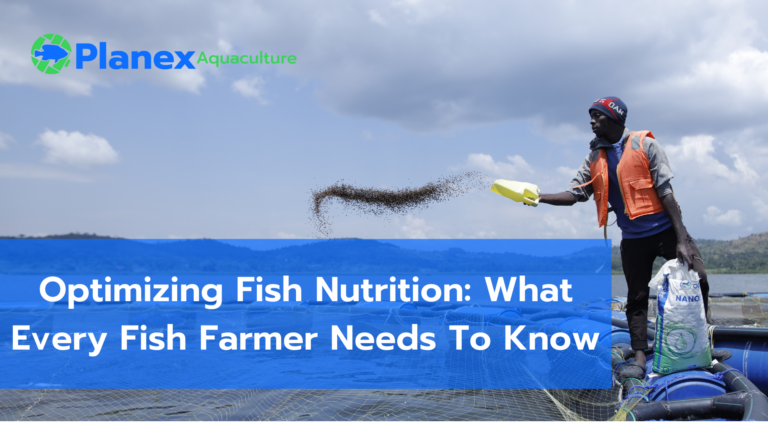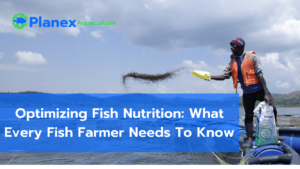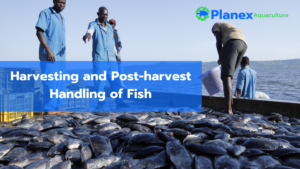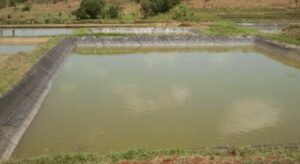Understanding the dietary needs of fish is crucial for maintaining their healthy growth. Fish nutrition encompasses a wide range of components, from proteins and fats to vitamins and minerals, each playing a vital role in the growth, reproduction, and overall well-being of fish. Just as in humans, a balanced diet for fish is not just for survival but also robust growth. The right nutrition can enhance growth and boost immune systems, hence ensuring a rich harvest of quality fish.
In the wild, fish have access to a diverse buffet of natural food sources, but in captivity, it’s up to the farmer to replicate this balanced diet. This is where the science of fish nutrition comes into play. By understanding the specific needs of different fish species, fish farmers can tailor their feeding strategies to mimic natural diets, ensuring their cultured fish receive all the necessary nutrients. This might necessitate formulating a perfect feed that supplies all the required nutrients by the fish. In this blog, you will have a comprehensive understanding of the key aspects of fish nutrition, empowering you to make informed decisions about the care and feeding strategies you can use to improve the performance of your fish farm.
Understanding fish nutrition
Good nutrition is essential for the production of healthy and high-quality fish, particularly in fish farming where feed represents a significant portion of the production costs. The advancement in fish nutrition has led to the development of new, balanced commercial diets that promote optimal fish growth and health. These diets are species-specific and tailored to meet the increasing demand for affordable, safe and high-quality fish.
With approximately 35,000 fish species, each with specific dietary requirements at different stages of growth, a tailored approach to their nutrition is necessary(1). Essential nutrients like protein, fat, vitamins, and minerals are crucial for fish health, with protein being particularly vital as it comprises a significant portion of fish feed, affecting growth and development. Therefore, meeting the dietary needs of fish, especially regarding essential amino acids like methionine and lysine, is crucial for optimal growth and health, particularly in feeds relying on plant proteins like soybean meal.
A complete fish diet
A complete diet for fish includes all the necessary ingredients for their growth and health. Most fish farmers use complete, which typically consist of protein (18-50%), lipids (10-25%), carbohydrates (15-20%), ash (<8.5%), phosphorus (<1.5%), water (<10%), and trace amounts of vitamins and minerals(2). In high-density aquaculture systems like cages where fish cannot forage freely, they must be provided with a complete diet. On the other hand, supplemental diets are used in outdoor ponds or raceways to fortify the naturally available diet with extra nutrients.
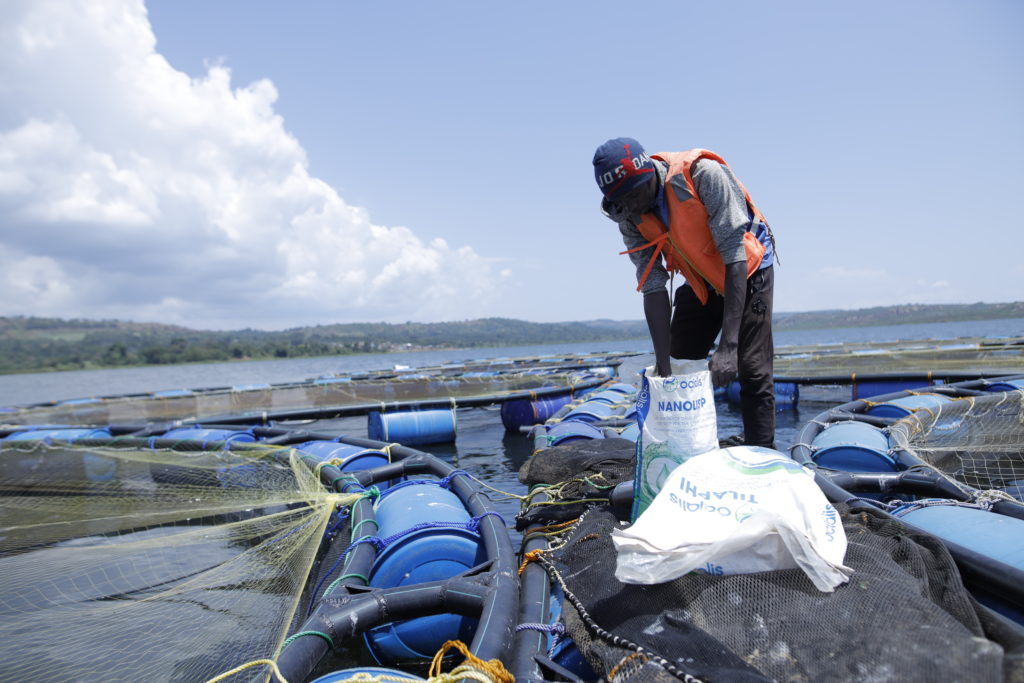
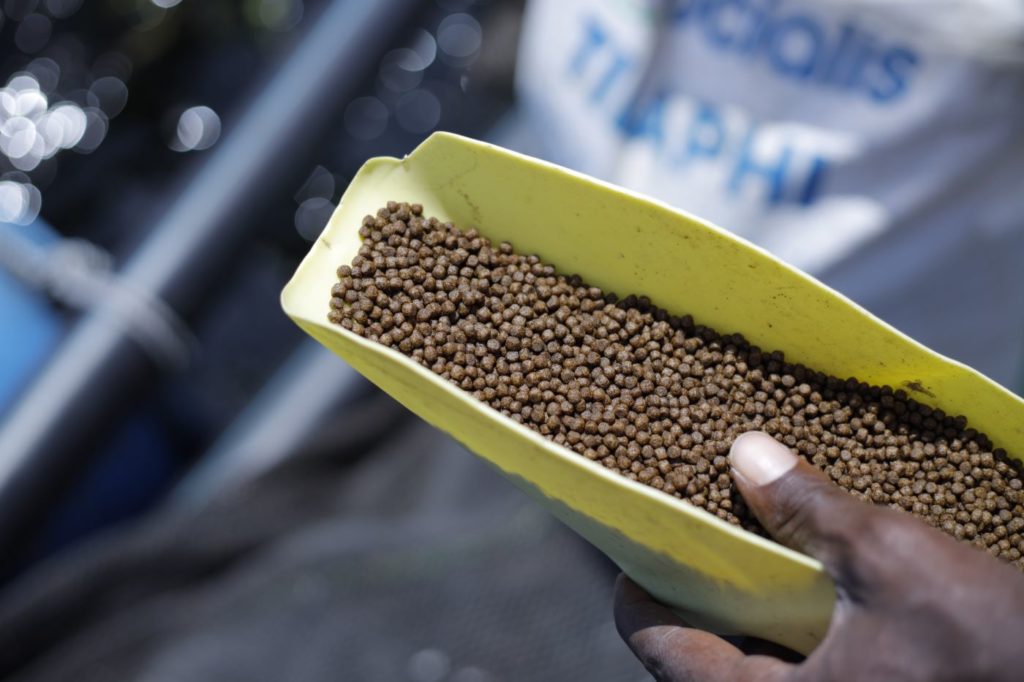
Why every fish farmer should have nutritional knowledge
1. Optimal Fish Growth and Health: Having knowledge about fish nutrition will help you identify or formulate the best feed that meets the specific needs of your fish. This ultimately leads to optimal growth rates and good health.
2. Efficient Feed Utilization: Knowing the right type and amount of feed can reduce wastage and ensure that the fish are utilizing the feed efficiently. This is important for the economic sustainability of the farm. Remember, fish feed isn’t just fish food. It’s money in pellet form.
3. Disease Prevention: A nutritionally balanced diet boosts the immune system of fish, reducing the incidence of diseases and the reliance on medications, which can be costly and potentially harmful to the environment.
4. Water Quality Management: Overfeeding or feeding with inappropriate diets can lead to water pollution due to the accumulation of uneaten feed and fish waste. Nutritional knowledge helps in feeding practices that maintain better water quality.
5. Market Quality and Consumer Health: Fish that are well fed tend to have better flesh quality, which is important for market value. Additionally, fish are a source of essential nutrients for humans, so proper fish nutrition directly impacts consumer health.
6. Environmental Sustainability: Knowledge of fish nutrition can lead to more sustainable farming practices by minimizing the environmental impact of fish farming, such as reducing the overuse of fishmeal made from wild fish stocks. Also, Overfeeding can deteriorate water quality. Uneaten food and fish waste can pollute the water.
7. Economic Efficiency: Understanding and applying nutritional knowledge can lead to cost savings by optimizing feed conversion ratios and reducing the costs associated with disease management and poor water quality.
Factors that affect nutritional requirements at a farm
Species-Specific Dietary Needs: Each fish species has evolved to thrive on a particular diet, which can range from strictly carnivorous to entirely herbivorous based on their feeding behavior. Carnivorous and omnivorous fish, such as bass and catfish respectively, require high levels of protein and are adapted to digest smaller fish and other microorganisms. On the other hand, herbivorous fish like tilapia need a diet rich in plant material to meet their nutritional needs.
Environmental Conditions: The environment significantly influences fish’s nutritional needs, with factors like water temperature and water quality influencing metabolic rates. Warmer waters increase energy demand and nutrient demand, while cooler waters conserve energy and reduce food intake. Poor water quality causes stress that suppresses appetite and hinder nutrient absorption, necessitating enhanced diet formulations to compensate for these effects.
Life Stage and Health Status: Nutritional requirements of fish change dramatically as they progress through different stages of growth. For instance, fry/young fish need diets high in protein and essential fatty acids to support rapid growth and development. Adults may require less protein but more energy sources to maintain their body condition and support reproductive functions.
Health Status: Diets supplemented with vitamins and immune-boosting foods may be necessary for fish that are recovering from illness or stress. In the same way, extra nutrition might be necessary for broodstock fish in order to guarantee the development of high-quality eggs and sperm.
Availability of Natural Food Sources: Availability of natural food sources like algae, plankton, and smaller fish influence fish species’ diets, providing essential nutrients and impacting their health and growth rates. At fish farms, natural foods can reduce reliance on manufactured feeds, but farmers must ensure the food is sufficient and balanced to meet their stock’s nutritional needs.
Farming Practices: Fish farming methods significantly influence their nutritional management. Extensive systems use natural water bodies where fish rely on naturally available food resources, semi-intensive systems combine natural and supplemental feeds, and intensive systems rely on manufactured, nutrient-complete feeds.
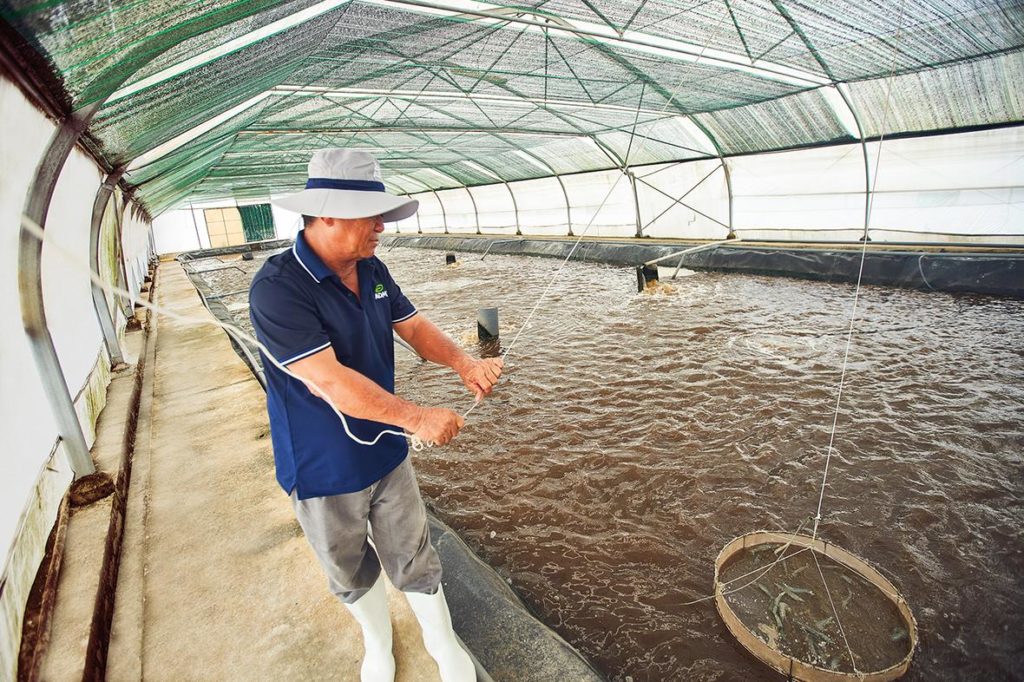
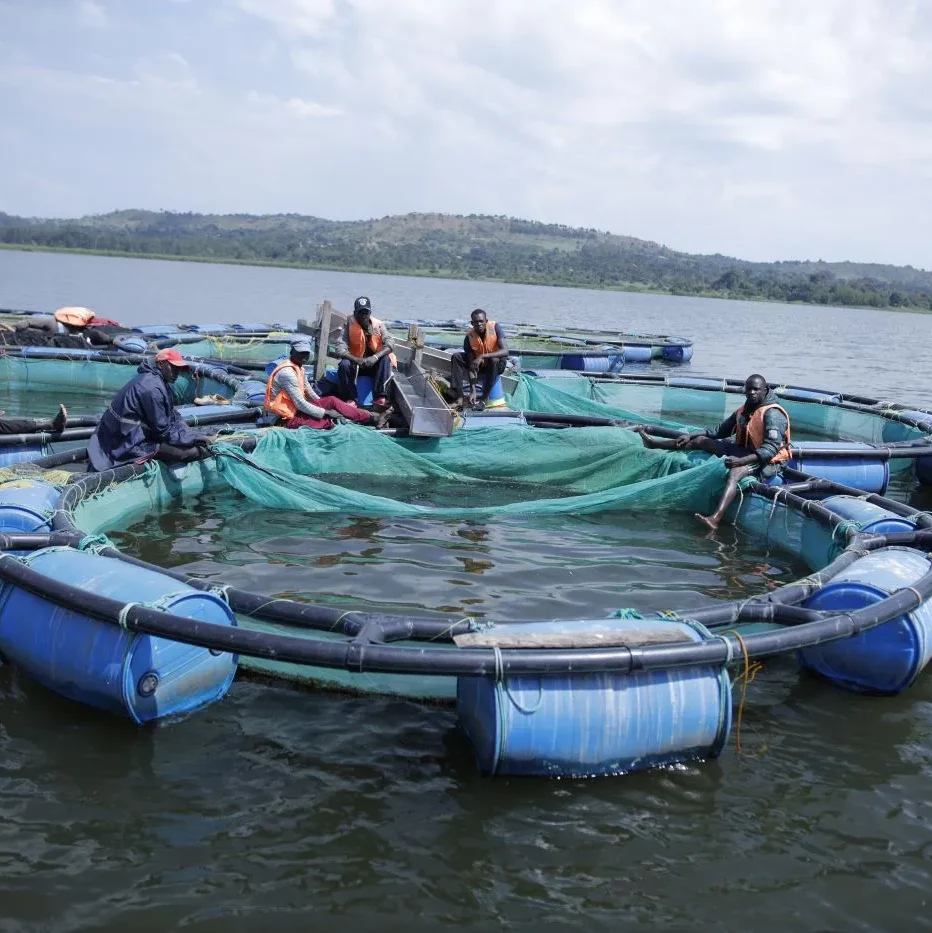
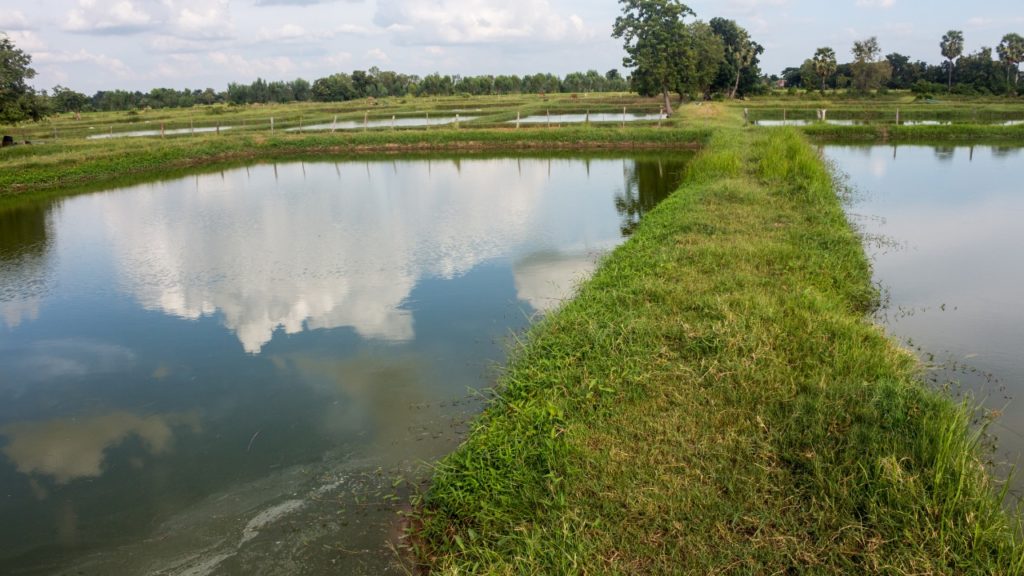
Here are the essential nutrient contents in fish feed
Proteins
Proteins are the building blocks of the body and are essential for the growth and repair of tissues in fish. They are composed of amino acids, some of which are essential because fish cannot synthesize them. These include lysine, methionine, threonine, and tryptophan, among others. A fish’s diet must contain these amino acids in the right proportions to ensure optimal growth and health. The protein content in fish feed typically ranges from 18% to 50%, depending on the species and life stage of the fish. High-quality protein sources for fish feed include fishmeal, soybean meal, and other plant and animal proteins.
Lipids (fats)
Lipids serve multiple functions in fish nutrition, including serving as a dense energy source and providing essential fatty acids that are vital for the structural integrity of cell membranes, reproduction, and overall health. Omega-3 and omega-6 fatty acids, found in fish oil and some plant oils, are particularly important for fish. The lipid content in fish feed usually varies between 10% to 25%. It’s important to balance the amount and type of fat in fish feed to prevent fatty liver disease and ensure the fish are healthy and have a high survival rate.
Carbohydrates
Carbohydrates are not as critical in fish diets as they are for terrestrial animals, but they still play a role in providing energy and aiding in digestion. They can also be a cost-effective filler and energy source in fish feed. The carbohydrate content in fish feed should generally be kept around 15-20%. Sources of carbohydrates in fish feed include grains and legumes, which must be processed properly to be digestible by fish.
Vitamins and Minerals
These are required in small quantities but are crucial for the proper physiological functioning of fish. They support processes such as bone formation, blood clotting, and energy metabolism. Each vitamin and mineral has a specific role, and deficiencies can lead to serious health problems. For instance, vitamin C is essential for collagen synthesis, and calcium and phosphorus are necessary for skeletal structure. The specific requirements for vitamins and minerals vary by fish species and life stage, and they are usually added to fish feed in a premixed form.
Other components
Other components of fish feed include ash, phosphorus, and water content. Ash, which is the inorganic residue remaining after combustion, should be less than 8.5% of the feed. Phosphorus is important for skeletal structure and should be less than 1.5%. Water content in fish feed should be less than 10% to prevent spoilage and maintain nutrient density. The precise formulation of these components is important to ensure the feed is nutritionally balanced and safe for fish consumption.
A well-formulated fish feed should provide a balanced diet that meets the nutritional needs of the fish, promoting healthy growth and development while being cost-effective for aquaculture operations. It’s a delicate balance that requires careful consideration of the specific dietary needs of the cultured fish species at the farm.
Feed additives
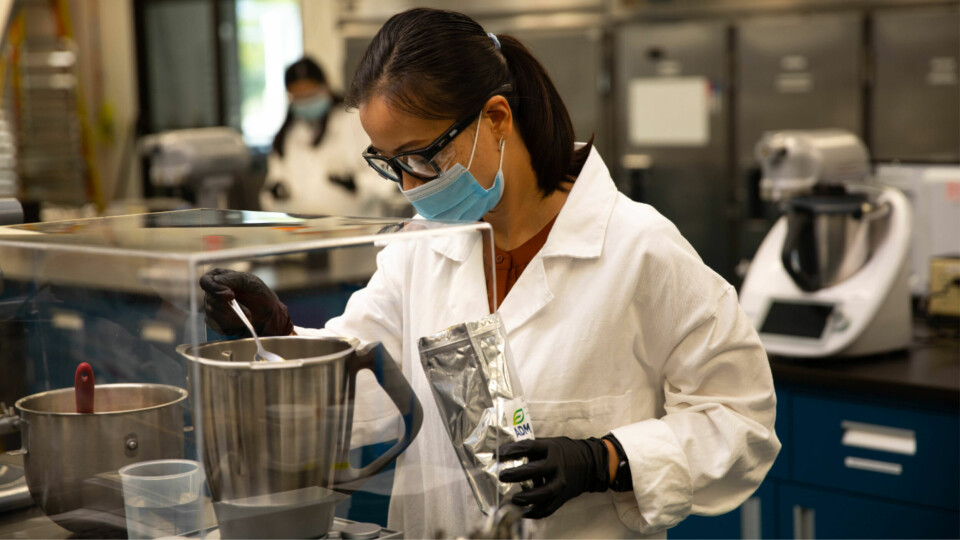
The role of feed additives in fish nutrition
Feed additives are substances added to fish feed to enhance its nutritional value or improve its digestibility. Additives enhance fish feed efficiency and nutrient absorption by fish through the inclusion of enzymes like phytase, which release hard to access nutrients such as phosphorus, making them easily accessible for fish metabolism. Probiotics and prebiotics are also commonly added to improve gut health, which is vital for nutrient uptake and disease resistance. Antioxidants preserve feed quality by preventing oxidative degradation, thereby maintaining the feed’s nutritional value over time.
Moreover, feed additives like attractants increase the palatability of the feed, encouraging better intake and growth rates. Functional additives, including those derived from seaweeds and microalgae, have been shown to boost growth performance and enhance the fish’s immune system, reducing the reliance on antibiotics and contributing to more sustainable fish farming practices. The strategic use of these additives is crucial for optimizing fish diets, promoting efficient resource use, and minimizing environmental impact.
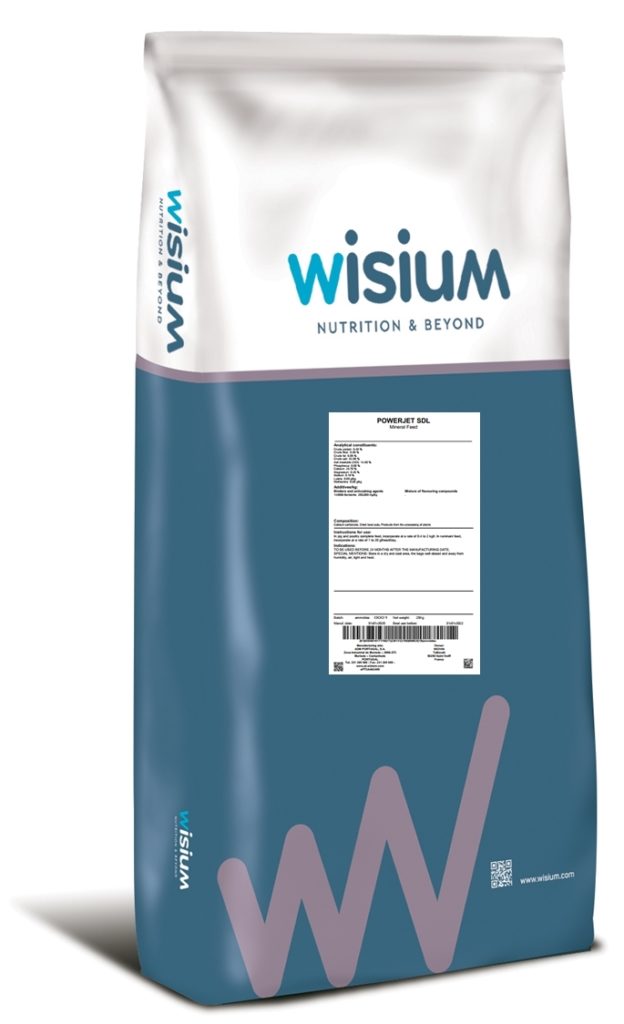
Types of additives and their functions
Here are some of the most common examples of fish feed additives and their functions:
Prebiotics and Probiotics: In fish feed, prebiotics and probiotics are crucial for enhancing fish health and growth. Probiotics are beneficial bacteria that improve gut health, nutrient absorption, and disease resistance, while prebiotics are non-digestible ingredients that promote growth of beneficial gut microbes. Together, they boost immunity, improve feed efficiency, and offer a sustainable alternative to antibiotics in aquaculture, leading to healthier and more productive fish.
Enzymes: These are added to fish feed to break down complex nutrients like proteins, fats, and carbohydrates, making them more digestible and accessible to the fish.
Organic Acids: These compounds help to maintain the pH balance in the gut, which prevent the growth of pathogenic bacteria and improve nutrient absorption.
Mycotoxin Binders: Mycotoxins are toxic substances produced by molds that can contaminate fish feed. Binders are used to neutralize the effect of these toxins, ensuring the safety and health of the fish.
Yeasts: Yeasts are a source of vitamins, minerals, and amino acids. They stimulate the immune system and improve the overall health and growth of fish.
Binders: These additives improve stability of feed in water, hence preventing nutrient leaching into the water and enhance pellet durability. Common binders include guar gum, wheat gluten, and starch from tapioca or wheat flour.
- Anabolic Agents: These are hormones or hormone-like substances added to accelerate growth above the normal physiological maximum. They boost growth through improved feed conversion and increased muscle development.
Feed storage and handling techniques
Proper storage and handling of fish feed are essential to preserve its nutritional integrity and ensure fish health. The main goal is to prevent the degradation of essential nutrients such as proteins, fats, and vitamins which can be compromised by factors like moisture, heat, and pests. Best practices include storing the feed in a cool, dry place away from direct sunlight to prevent the breakdown of vitamins and oxidation of fats. Feed should be kept in secured containers that are out of reach of rodents and insects to avoid contamination. It’s also important to follow a first-in, first-out (FIFO) system to ensure that older stock is used before newer feed, thereby minimizing the risk of spoilage.
In addition to proper storage, handling techniques play a crucial role in maintaining feed quality. During transportation and transfer, care must be taken to keep the feed dry and free from contaminants. Tools and equipment used for handling the feed should be kept clean, dry and sanitized regularly to prevent the introduction of pathogens. Furthermore, monitoring the feed for any signs of mold or unpleasant odors is important as these are indicators of spoilage. By implementing these techniques, farmers can ensure that the feed remains safe and nutritious, ultimately leading to a healthier fish population and better yield.
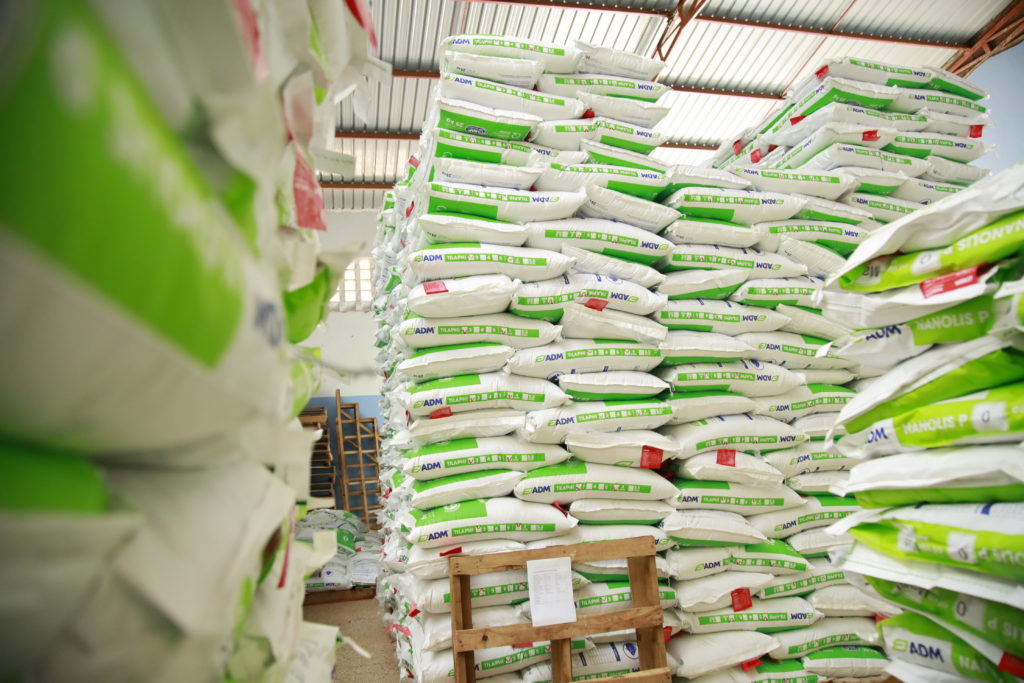

Calculate the appropriate amount of fish feed
Calculating the appropriate feed for your fish is crucial for their health, growth, and the economic efficiency of your fish farming operation. Here’s an informative guide to help you determine the right amount of feed for your fish.
Basic Formula for feed calculation
The basic formula to calculate the daily feed requirement for your fish is:
Daily Feed (kg) = Biomass (kg) X Feeding Rate (%)
Where:
Biomass is the total weight of the fish in the pond.
Feeding Rate is the percentage of the fish’s body weight that should be fed daily.
Step-by-step calculation
Estimate Biomass: Count the number of fish and estimate the average weight per fish to calculate the total biomass.
Biomass (kg) = Number of Fish X Average Weight per Fish (kg)
Determine Feeding Rate: This depends on the species and size of the fish. Check out our Feeding Kit to have access to all appropriate feeding rates of fish at different growth stages.
Calculate Daily Feed: Multiply the biomass by the feeding rate.
Daily Feed (kg) = Biomass (kg) X Feeding Rate (%)
Practical example
Let’s say you have a pond with 1000 tilapia fish, each weighing an average of 200g (0.2kg). The recommended feeding rate for tilapia of this size is 3%.
Calculate Biomass:
Biomass (kg) = 1000 fish X 0.2 kg fish = 200 kg
Calculate Daily Feed:
Daily Feed (kg) = 200 kg X 3% = 6 kg
So, you would need to feed your tilapia 6 kg (6000 grams) of feed per day.
Adjustments and monitoring
Monitor Growth: Regularly weigh a sample of fish to adjust feeding rates as the fish grow.
Observe Behavior: Fish that are actively feeding are likely healthy and growing.
Adjust for Waste: Overfeeding can lead to waste and poor water quality, so adjust your feeding accordingly.
In conclusion, it is clear that the health and growth of aquaculture stock are deeply rooted in the understanding and application of nutritional science. From digestion to metabolism, and nutrient absorption, it is evident that precision is required in feeding practices of fish. As a fish farmer, it is vital to have adequate knowledge about species-specific dietary needs at different stages of growth. The introduction of feed additives has revolutionized aquaculture, offering a means to enhance gut health, improve feed digestibility, and prevent nutrient deficiencies. These additives, ranging from probiotics and enzymes to essential vitamins, fine-tune diets and promote robust growth. However, the effectiveness of these nutrients depend on proper feed storage and handling techniques. Best practices in this area are not just recommendations but necessities to maintain the feed’s nutritional value and prevent spoilage.
Looking ahead, the future of fish nutrition in aquaculture is bright with potential. As research advances and our understanding deepens, the possibilities for innovation in feed composition and nutritional enrichment are limitless. Feel free to read through our fish feed portfolio for more details about fish feed specifications.

